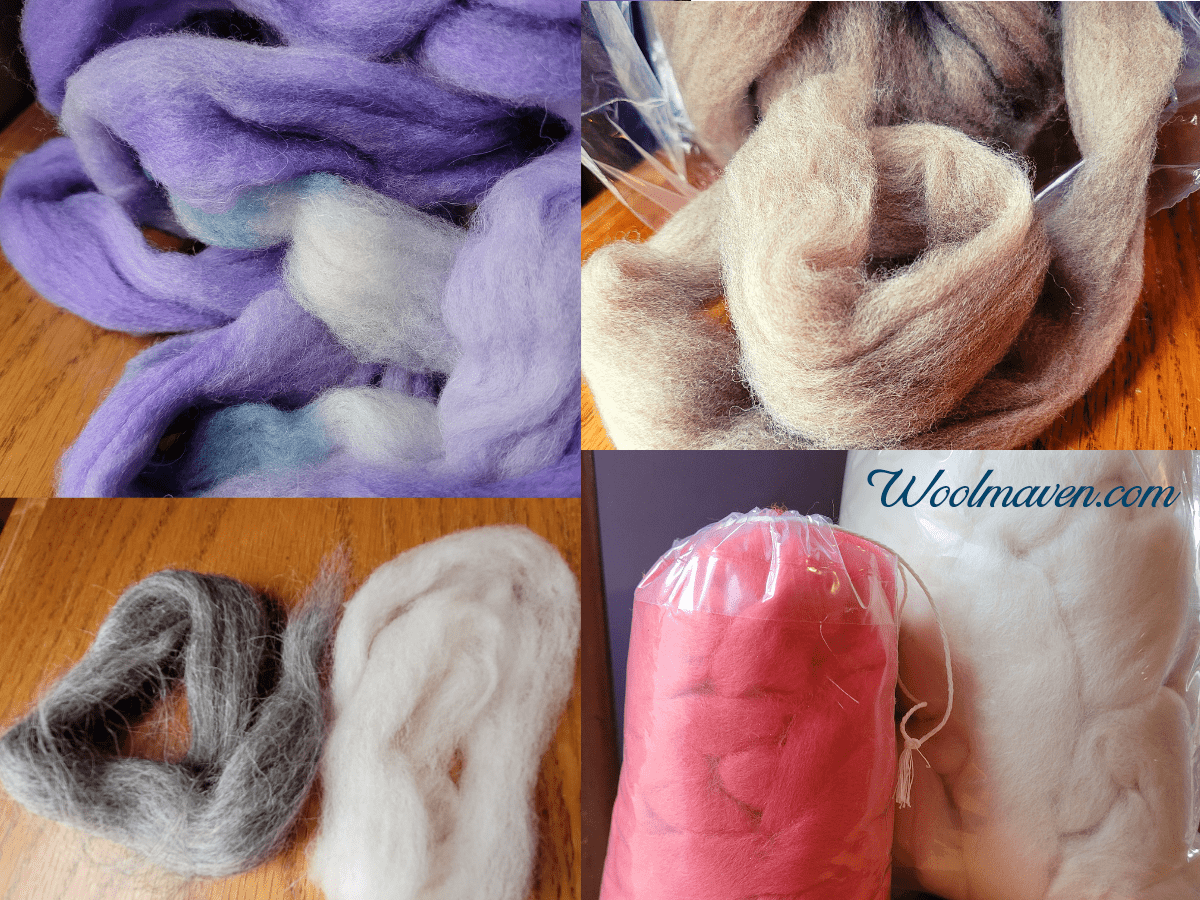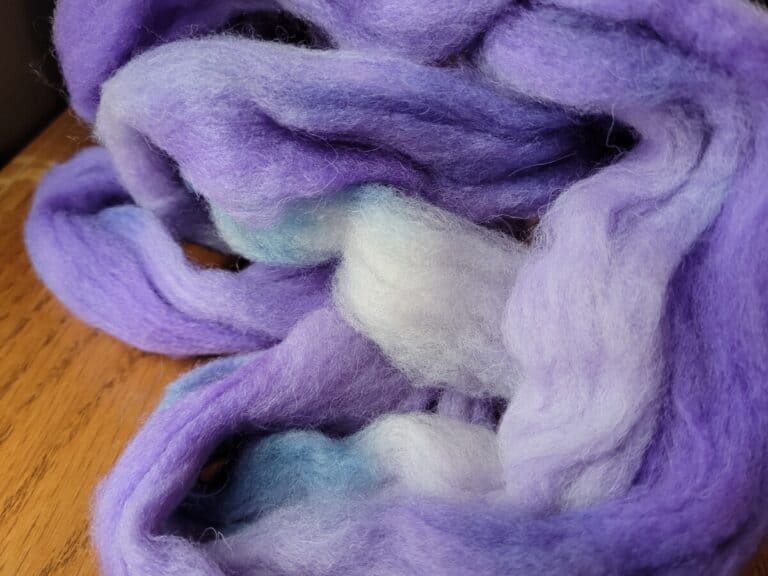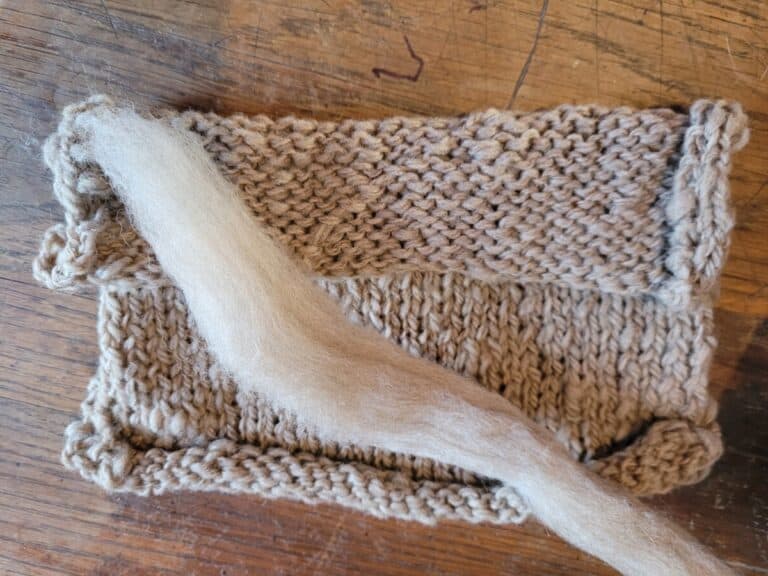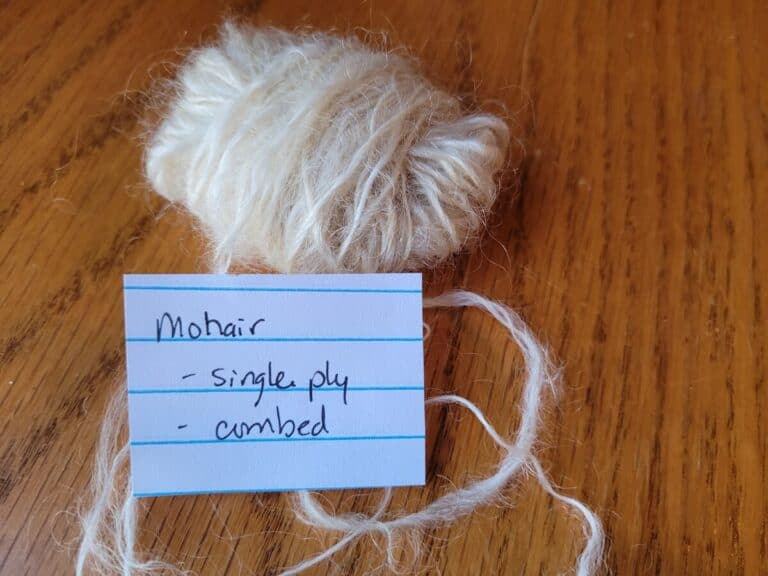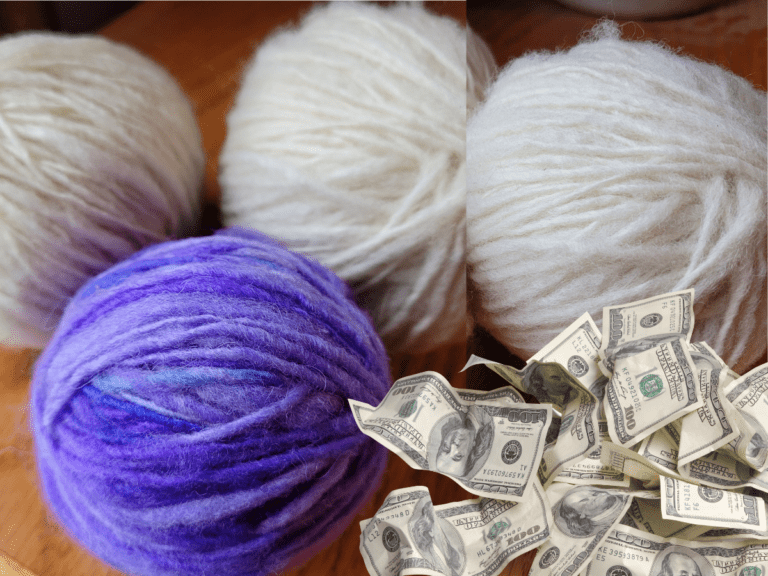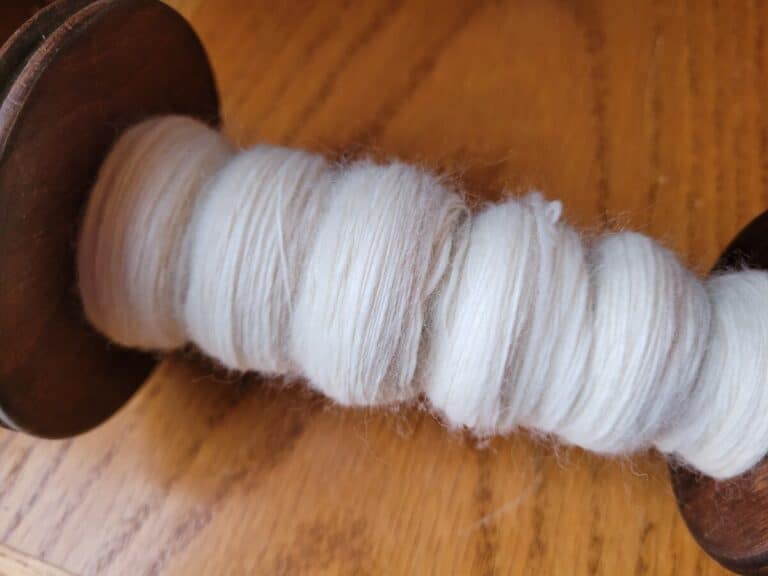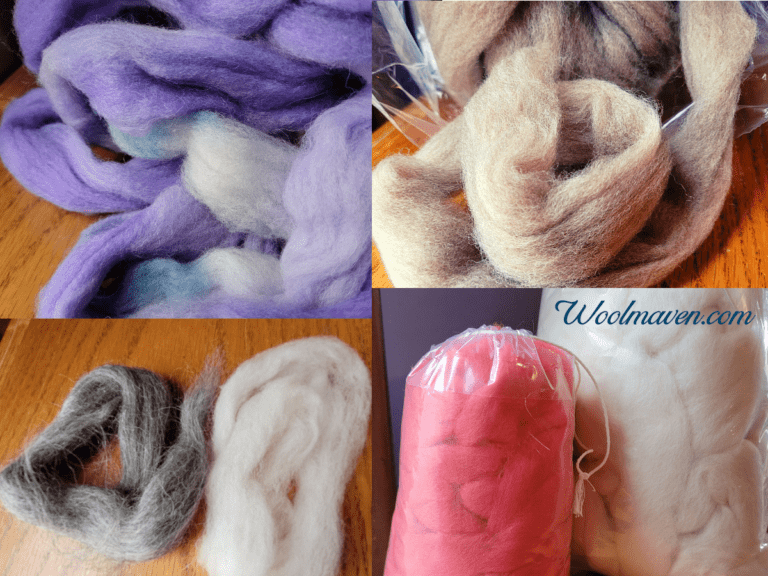Wool Roving Or Top: Which one you should use and why
Wool roving and wool top, two terms that are commonly encountered when exploring the world of wool craft, actually mean very different things but are frequently used interchangeably.
For anyone shopping for wool for a specific spinning project, this is a point of confusion that must be sorted out! What are the specific differences between roving and top and when would you use them?
Wool roving is prepared wool fiber that is washed and carded into a ready to use 1-2 inch fluffy rope, in which the wool fibers run in various directions. Wool top is carded wool that is put through an additional preparation step of combing so that the fibers in the prepared wool are all parallel, giving the fibers in the wool top a smooth, sleek appearance.
Wool roving and wool top, it’s confusing! Let me help you work through the differences and, more importantly, when you would use each.
New to spinning and want some help? Try my Beginning Spinner Course, it has simple, step by step instructions and is designed to take you from beginner to confident spinner!
Best Roving For Beginners gives you some great beginner friendly wool choices!
| Characteristic | Roving | Top |
| handspinner friendly | yes | yes |
| used to spin woolen yarn | yes | no |
| used to spin worsted yarn | no | yes |
| easy to find | no | yes |
| harder to find | yes | no |
| insulating/heat trapping ability | higher | lower |
| stitch definition | lower | higher |
| cost to purchase | same | same |
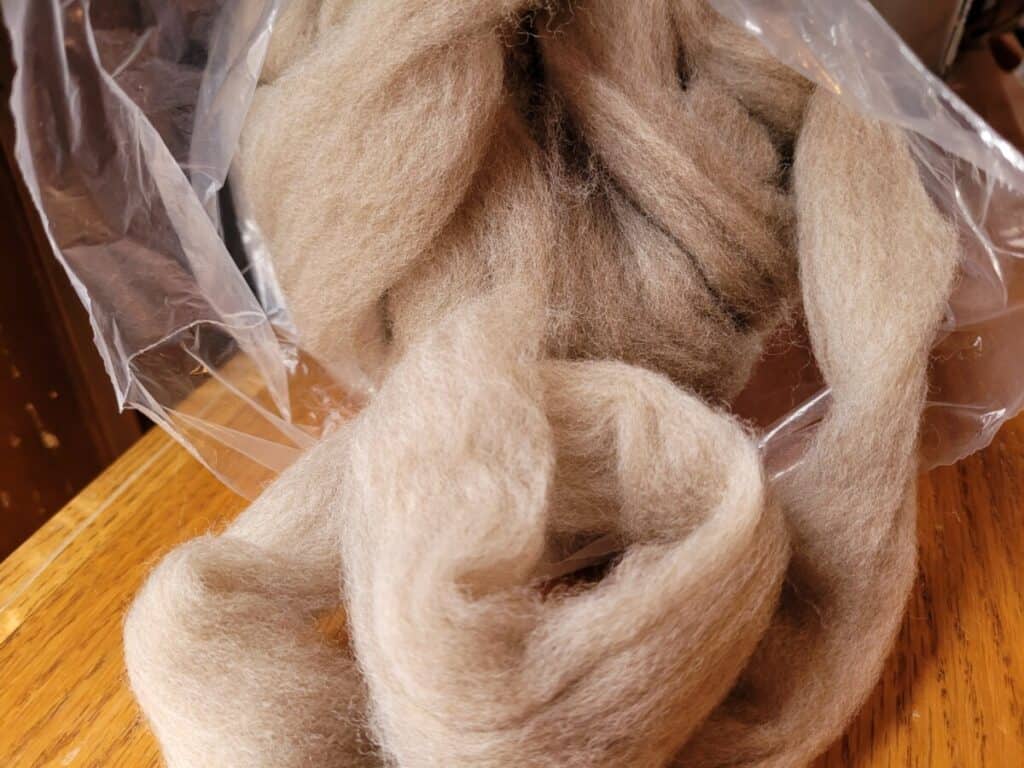
This post contains affiliate links, which means I receive commissions if you choose to purchase through links I provide (at no extra cost to you).
Looking for a great resource on which fiber to pick and how best to use it? Consider getting The Fleece And Fiber Sourcebook, filled with wonderful pictures and details on just about any wool you can find.
Wool roving vs top
Wool roving is a fiber preparation in which all of the wool fibers are washed and carded into a cotton candy type rope of 2-3 inches wide.
The fibers in roving run all different directions and the “rope” of wool has a puffy look to it.
Wool top is combed roving. This is an additional fiber preparation where all of the fibers are running parallel, meaning the “rope” of fiber looks more like a smooth river.
Beginners looking for top to start with will find Corriedale or Romney to be easiest to work with.
Roving is carded while top is combed, making top a smoother rope of ready to spin wool.
Using Combed Top gives you a few tips on when to use combed top instead of other fiber preparations.
Most wool roving is actually top
Most of the wool roving that you buy is actually combed top. I know that sounds crazy, especially since even the heading category for the online store is roving!
I found it very difficult to actually buy roving for spinning.
I can find actual roving for felting, meaning shorter fibers in the wool, but not roving with a staple length that I am comfortable using. Maybe I need to expand my experience!
The crazy part here is that I specifically ordered certain breeds of wool as both roving and top, to see what the difference was in spinning them, but when they showed up, it was all actually combed top!
I am enjoying using my order, but now will be much more selective when ordering wool next time to make sure that I can actually get roving, not just prepared wool that is called roving but is actually combed top.
New to spinning and want some help? Try my Beginning Spinner Course, it has simple, step by step instructions and is designed to take you from beginner to confident spinner!
Roving is good for woolen spinning
Pros: great for woolen style spinning
Cons: hard to find since is often misnamed top
Roving is good for woolen type spinning, which will give you a yarn with more poof and less stitch definition.
This yarn will also be warmer, since the poof is really trapped air, that’s the insulating part!
Roving would also be better for any yarns that you were planning on felting, either as yarn or as a finished garment.
Since the fibers of the roving are going in multiple directions, the fibers will be better able to felt than a worsted spun.
If your project demands actual roving, you may need to get some of the fiber and process it yourself into roving.
You could do this by carding the top into rolags and using the rolags as your spinning fiber.
This will not be as puffed as actual roving, since in the combing process the shorter fibers fall out, but it will be closer to roving than the top you are commonly seeing for sale.
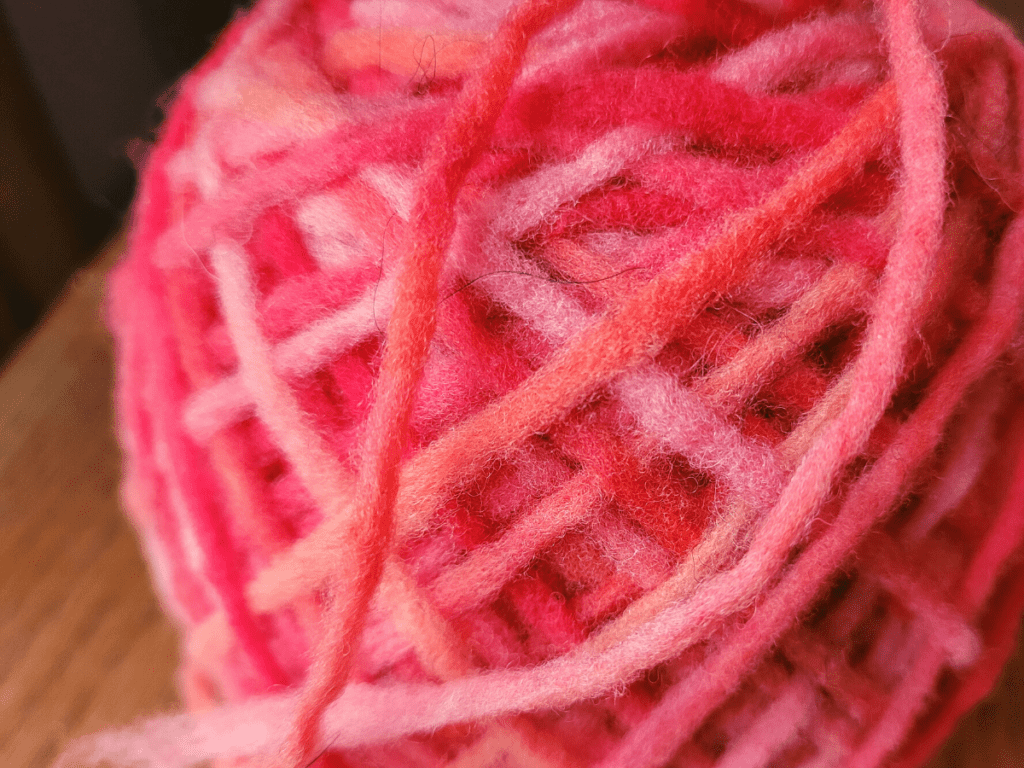
Combed top is good for worsted
Pros: easiest prepared fiber to find, great for spinning worsted or semi worsted
Cons: lacks the lift or insulating ability of yarns spun with roving
Top or combed top is ideal for worsted spinning.
The combing of the fibers will align the fibers to all go in one direction and allow them to sit more closely together in the finished yarn, this means a cleaner, more defined look to the yarn.
This clean look allows worsted yarn to be used for very crisp looking stitches in the finished garments, think of an Aran sweater pattern.
After all of that work, you’ll want each and every one of those cables to show up beautifully!
Combed top can be used to make yarns for items that are still going to be warm, like a hat, it just will not have the insulating ability of a yarn spun woolen, but will be stronger than a woolen spun yarn.
Use top to spin semi worsted
An alternative to spinning top worsted is to spin it semi worsted.
Semi worsted will give you more fluff to your yarn than spinning worsted, it’s a kind of cheater style woolen technique.
To spin semi worsted: pull the combed top apart into sections that are 6 inches or so long and kind of fluff them up.
Then lay the fluffed sections on top of one another and fold it over your first finger, in the shape of a horseshoe.
Use this as your fiber to spin semi worsted, by taking the top of the horseshoe and drawing it up into the yarn. This means your fiber is going into the yarn in a V shape.
Of course, this will not give you the fluff of woolen, but it will give you more of a woolen result if you are starting with top.
Beginners should not worry too much about roving vs top
If you are a beginning spinner, you should not worry too much about roving vs top.
Just get some top, since that is going to be the easiest to find and work on learning to spin.
Even if you want to do mostly woolen (puffy) yarns, learn on the fiber that you can find and then branch out to spinning the yarn you want.
All you’ll have to do is learn another technique, you’ll already be comfortable with the wheel, so learning to spin in a different style will be much faster than starting from scratch like when you were completely new.
New to spinning and want some help? Try my Beginning Spinner Course, it has simple, step by step instructions and is designed to take you from beginner to confident spinner!
Handspinning is creative, you can use either one!
One of the things that I like best about handspinning is that it is so creative. You are only limited by your imagination as to what you can do and only you decide whether or not your yarn meets your purpose.
What I’m trying to say is that it’s not so much if you spin a good yarn or a bad yarn it’s how close did you get to what you were trying to do, there really is no “bad” yarn.
You may have spun something that will not suit your purpose, but if you consider the properties of the yarn, you’ll think of a purpose that it will work well for.
Play around with the fiber you have, whether it is roving or top and see what you can do with it.
The Woolery has a nice article on How To Get Started With Spinning going over the equipment you need as well as a few good wool choices and has multiple tutorials.

